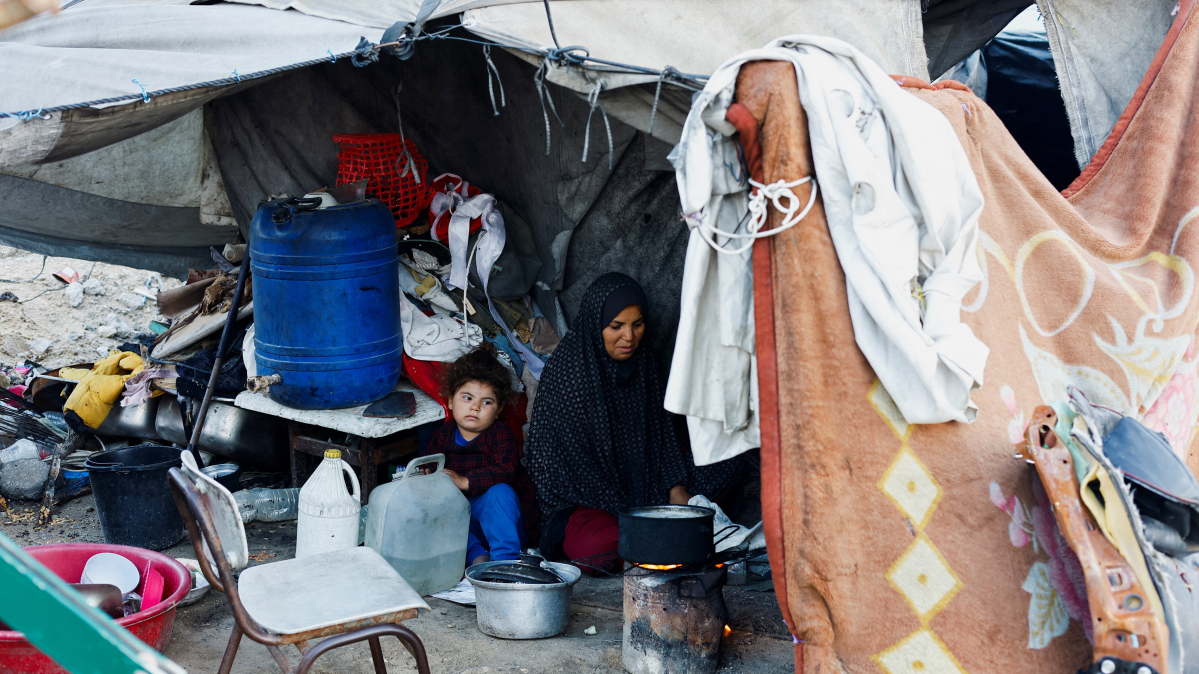Ukraine claims critical strike on Russian submarine in Novorossiysk
Ukraine’s domestic security service, the SBU, says it struck a Russian Kilo‑class submarine in the Black Sea port of Novorossiysk, causing critica...

Israeli forces killed three Palestinians in Gaza on Monday near the line separating zones of Israeli control, exposing tensions in the ceasefire agreement signed on 9 October.
Palestinian medics said an Israeli drone fired a missile at a group east of Khan Younis, killing two and wounding another, while a tank shell killed one person on Gaza City’s eastern edge. The Israeli military said it targeted “terrorists” attempting to cross the so-called yellow line and approach its troops, describing the group as posing an immediate threat.
Highlighting ongoing challenges with the ceasefire, the armed wing of Palestinian Islamic Jihad announced in a statement later on Monday, that it had located the body of one of the three hostages still missing in Gaza, in an area under Israeli control. The group did not provide a timeline for handover.
These escalations follow the ceasefire Hamas and Israel signed on 9 October, halting two years of devastating conflict but leaving key disputes unresolved. Under the agreement, Hamas released 20 surviving hostages in exchange for nearly 2,000 Palestinian prisoners, while the remains of 28 hostages were swapped for 360 militants. Since the truce, both sides have accused each other of violations.
Meanwhile, support for the U.S.-backed Gaza peace plan is growing internationally. On 15 November, the United States, Qatar, Egypt, the United Arab Emirates, Saudi Arabia, Indonesia, Pakistan, Jordan, and Türkiye issued a joint statement urging the UN Security Council to swiftly adopt a resolution endorsing President Donald Trump’s plan. The statement also referred to discussions during the UN High-Level Week, describing the initiative as a roadmap for Palestinian self-determination and eventual statehood.
Former British Prime Minister Tony Blair, who helped develop the plan and may join the proposed international board of peace, met PA deputy leader Hussein al-Sheikh on Sunday in the West Bank. Sheikh said via social media that they discussed implementing the Security Council resolution and the requirements for Palestinian self-determination.
In Cairo, a Hamas delegation led by exiled official Khalil al-Hayya held talks with Egyptian mediators on advancing the ceasefire. Hamas spokesperson Hazem Qassem acknowledged the process was “complex” and warned Israeli violations were undermining progress.
One of the main obstacles remains the proposed international security force. Israel insists the force must disarm Hamas, while Hamas argues the force must prevent Israeli troops from approaching civilians. Highlighting uncertainty, a Palestinian official close to the Cairo talks said, “There is complete uncertainty. Without a political track, without an understanding among all Palestinian factions, any deployment of forces would only make matters more complicated.”
The UN estimates that more than 15,000 people have been displaced in Gaza since the ceasefire took effect, with limited access to food, water, and medical care. Humanitarian agencies warn that ongoing violence and delays in implementing the peace plan continue to threaten civilian lives.
Russia’s human rights commissioner, Tatyana Moskalkova, has said that Ukraine has not provided Moscow with a list of thousands of children it alleges were taken illegally to Russia, despite the issue being discussed during talks in Istanbul.
Iranian authorities have seized a foreign tanker carrying more than 6 million litres of smuggled fuel in the Sea of Oman, detaining all 18 crew members on board.
An explosive device found in a vehicle linked to one of the alleged attackers in Bondi shooting has been secured and removed according to Police. The incident left 12 people dead.
The latest round of clashes between Thailand and Cambodia has left 15 Thai soldiers dead and 270 others injured, Thailand’s Ministry of Defence spokesman Surasant Kongsiri said at a press conference on Saturday.
Syrian President Ahmad al-Sharaa has offered condolences to President Donald Trump following an ISIS attack near the ancient city of Palmyra that killed two U.S. soldiers and a civilian interpreter, Syrian and U.S. officials said Sunday.
The European Union’s interest in investing in regional connectivity projects in the South Caucasus, such as the Trump Route for International Peace and Prosperity (TRIPP) is driven by a need for strategic credibility and a tangible foreign policy success, according to a regional expert.
Shadow Trade is an investigative documentary by AnewZ that examines how global sanctions imposed after Russia’s 2022 war in Ukraine have been weakened through informal trade routes, permissive transit regimes, and overlooked commercial practices.
Kazakhstan and Uzbekistan have signed a new agreement on the transportation of natural gas through Uzbek territory, strengthening bilateral energy cooperation and supporting regional energy security ahead of the winter season.
Kazakhstan is assessing the scale of damage and potential losses following a recent attack on infrastructure operated by the Caspian Pipeline Consortium, a key export route for the country’s oil.
The Taliban leadership in Afghanistan opted out of a major regional meeting held in Iran’s capital Tehran on Sunday.
You can download the AnewZ application from Play Store and the App Store.

What is your opinion on this topic?
Leave the first comment